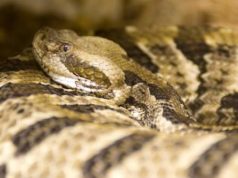
On November 30, 2012, the Fish and Wildlife Service announced that the prairie chicken is now considered threatened under the Endangered Species Act (ESA). According to the Environmental Defense Fund (EDF), the decision by the Fish and Wildlife Service will likely cause state and federal wildlife agencies to issues stricter permits and operations of energy developers and ranchers in the bird’s habitat.
The bird is mainly found in Kansas, Oklahoma, Texas, New Mexico, and Colorado—states that all have large farming and ranching industries as well as large amounts of oil, gas, and wind energy development.
David Festa, the Vice President of the Land, Water and Wildlife program for the EDF, states: “In the past, these kinds of ESA listing decisions have led to years of litigation and conflict. Now, with the lesser prairie chicken, we’re working with land users to set up Wildlife Habitat Exchanges that provide cooperative, cost-effective habitat conservation.”
After the listing of the lesser prairie chicken under the ESA, the EDF is going to work with landowners, developers, and companies that will help protect the chicken’s habitat at the lowest cost possible while letting industry continue in the areas without debate and litigation. The Wildlife Habitat Exchanges will recruit private landowners—such as farmers and ranchers—to maintain the habitat of the chicken, and the land can then be leased to energy companies and other developers so the companies can meet obligations under the ESA to protect wildlife.
Steve Swaffar with the Kansas Farm Bureau states: “Habitat Exchanges are a smart solution for threatened species such as the lesser prairie chicken. Exchanges deliver quantifiable measures of habitat and resources, at the same time giving private landowners an opportunity to derive income by providing for the specific needs of the species, and continue to use their property for agriculture production.”
The EDF reports that about 90 percent of the bird’s habitat is on private land. Other states have used Habitat Exchanges in the past and the initiatives have proven extremely successful. For example, Texas used Habitat Exchanges to protect the golden checked warbler and increase the bird’s numbers.
The Fish and Wildlife Service’s listing was only an initial decision, and it has a year to make the final listing decision.
David Festa remained optimistic about Wildlife Habitat Exchanges: “EDF supports Wildlife Habitat Exchanges as a proven model that could change the trajectory of the lesser prairie chicken. It can bring the species back from the brink and put it on a path toward recovery before the final listing decision is made.”
Source: Environmental Defense Fund


































